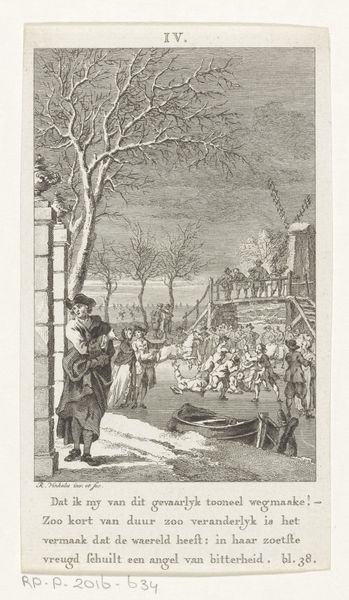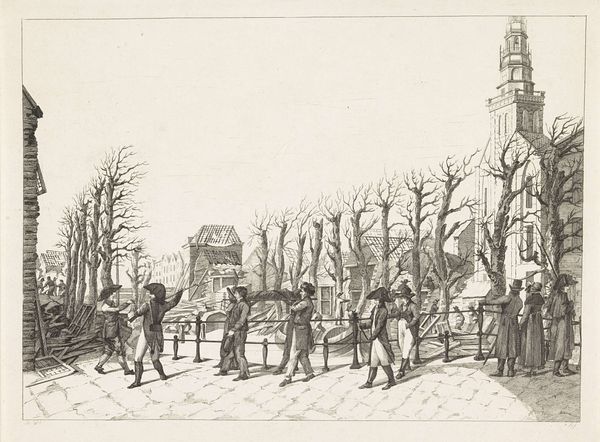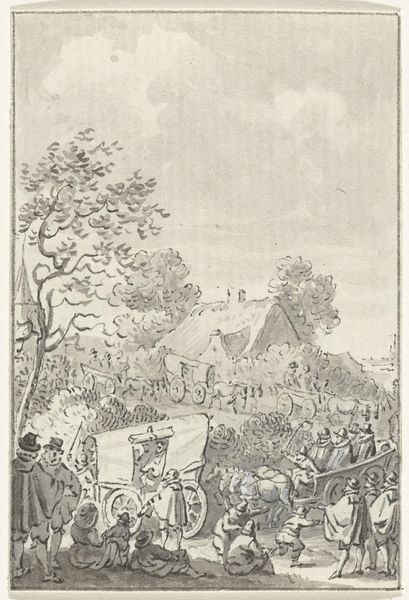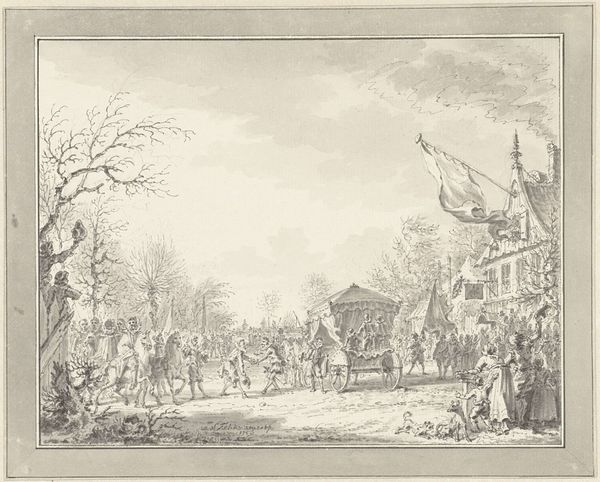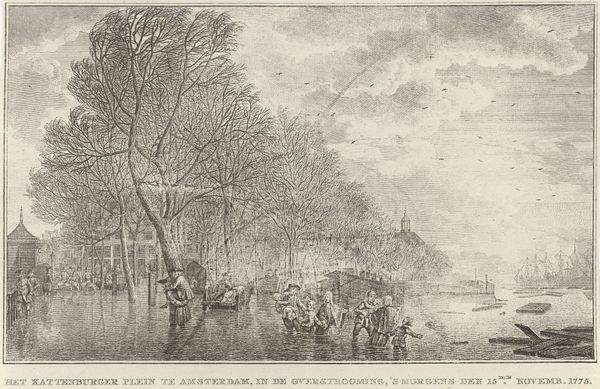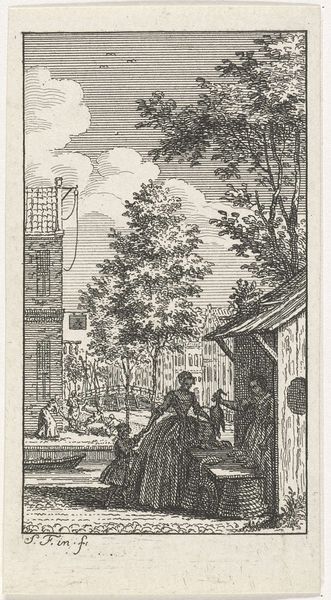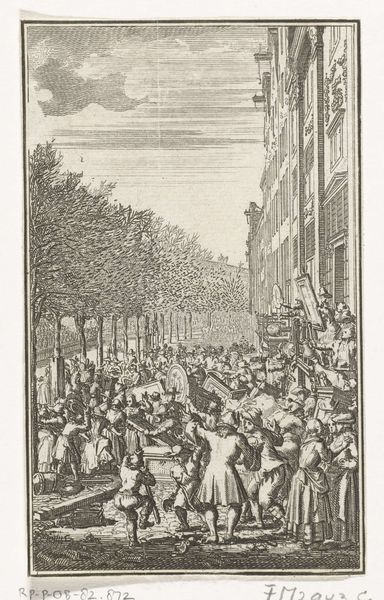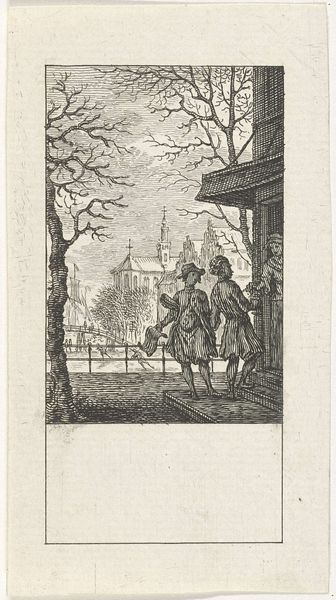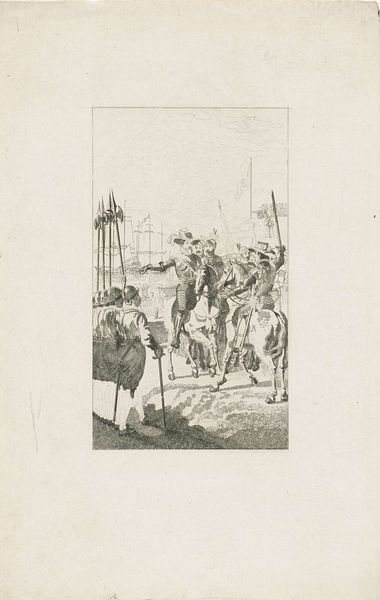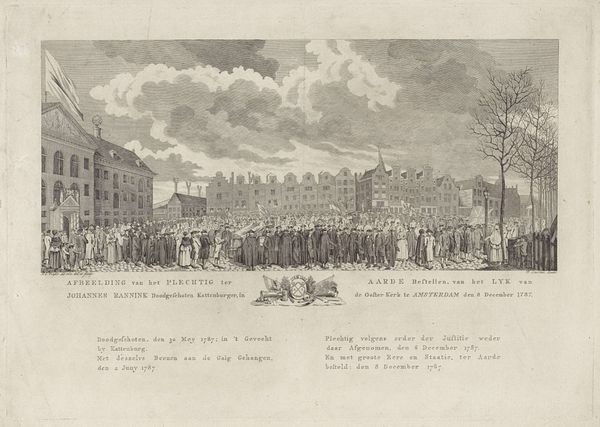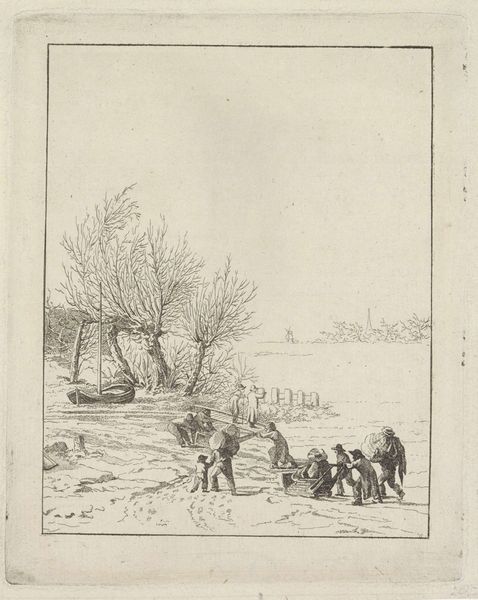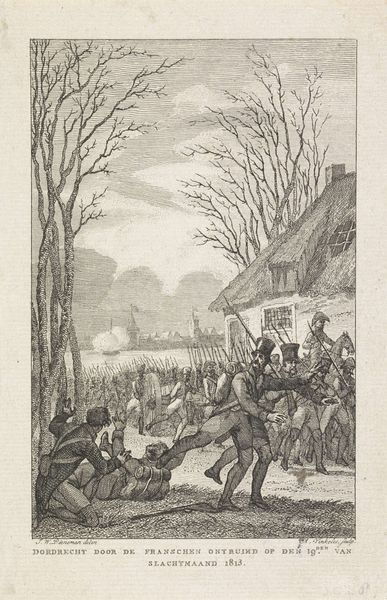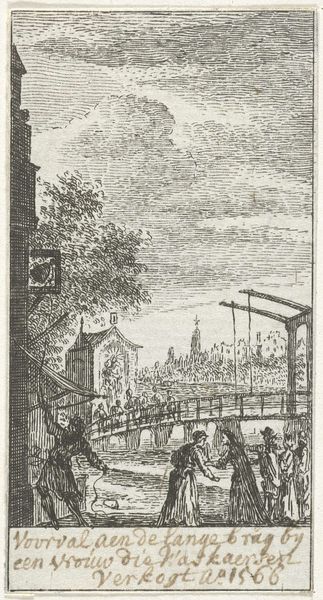
Dimensions: height 175 mm, width 110 mm
Copyright: Rijks Museum: Open Domain
Editor: We're looking at Reinier Vinkeles's "Winter" from 1769, a pen and pencil drawing currently housed in the Rijksmuseum. It's a busy winter scene with people on a frozen body of water, and there’s an almost chaotic energy to the whole composition. What story do you think this piece tells? Curator: It’s a fascinating genre painting that reflects the social experience of winter in 18th-century Netherlands. Vinkeles gives us a glimpse into popular pastimes of the era, the kind accessible to a variety of social classes despite potential hazards of frozen waterways. Editor: Hazards? Curator: Well, yes. The inscription implies danger amid winter festivities; the joy of winter comes at a risk. This depiction raises the question of who gets to participate in the “fun” of winter activities? Are they shared by all social classes, or are they implicitly coded and controlled, similar to contemporary access to recreation and resources? Consider the presence of the windmill—a key element in Dutch landscape painting – symbolizing labor and potentially economic disparity set against leisure. Editor: I see. So, the picture isn't just showing a fun winter day; it is making some historical, perhaps even political comment, about equity through its visual elements. Curator: Precisely! This artwork can be interpreted as a window into the social dynamics and the layered complexities of leisure and danger within a specific time and place. The composition invites us to consider winter pastimes and their societal implications, similar to today’s images we see in public spaces and on social media. Editor: That definitely reframes the entire scene for me. I came in expecting a simple landscape, but I'm leaving with questions about power and access. Curator: And that is often the role of art: to not just please the eye, but provoke critical inquiry.
Comments
No comments
Be the first to comment and join the conversation on the ultimate creative platform.
